1. Heinz EZ Squirt Ketchup
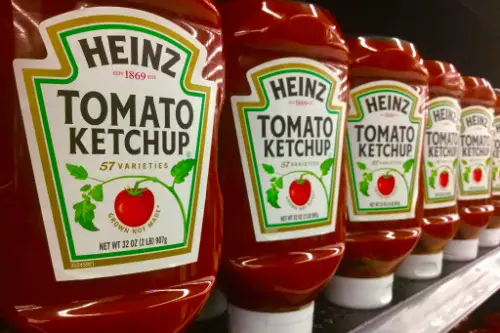
In the early 2000s, Heinz tried to capture the attention of kids with their brightly colored EZ Squirt ketchup, which came in funky shades like green, purple, and pink. While the novelty was fun for a while, the colorful ketchups quickly became a gimmick. The product was discontinued in 2006 after it failed to achieve lasting popularity. Parents were less inclined to buy the artificially colored condiment, and kids soon lost interest in the novelty.
The rise of healthier, more natural food options also contributed to the disappearance of EZ Squirt ketchup. With an increased focus on clean eating and avoiding food coloring, it just wasn’t something people wanted to keep on hand. Heinz eventually returned to its roots, focusing on the traditional ketchup flavor and staying away from artificial enhancements. The colorful ketchup era may be over, but it remains a fondly remembered oddity from the past.
2. Twinkies
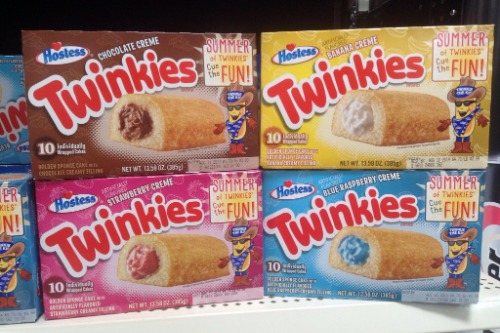
Twinkies, the iconic snack cake, once epitomized American comfort food. Over the past decade, they’ve been hit by supply chain issues, fluctuating sales, and health concerns, Fast Company explains. Their place in history is secure, but their presence on store shelves has started to dwindle in recent years. The Hostess brand, which was in financial turmoil before being bought by new owners, has led to sporadic availability of these golden cakes.
Despite their return to stores after Hostess’s bankruptcy and revival, the Twinkie isn’t the guaranteed snack it used to be. With more people gravitating toward healthier snack options, Twinkies are often sidelined in favor of organic or low-sugar alternatives. What was once a symbol of convenience has become more of a nostalgic treat. So, don’t be surprised if you see fewer of them on the shelves as tastes evolve.
3. Surge
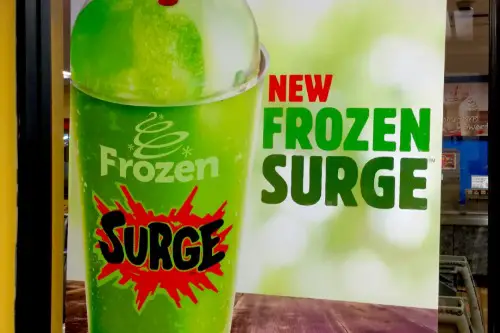
Surge was a citrus soda that came onto the scene in the ’90s, often compared to Mountain Dew for its hyper-sweet and caffeinated qualities. After being discontinued in 2003, a passionate fan base helped bring it back in 2014 through online petitions and social media support, according to MLive. Unfortunately, despite the hype, the brand just couldn’t maintain consistent shelf space. Surge’s revival was short-lived, partly because of the dominance of other soda brands and shifting consumer preferences.
Surge might have been a cult favorite for a time, but its reliance on high sugar content and artificial ingredients couldn’t compete with today’s beverage trends. More consumers are seeking healthier options or switching to sparkling water and energy drinks. When sugary sodas like Surge try to make a comeback, they often find that it’s no longer the go-to choice for a generation of drinkers. So, Surge continues to quietly disappear, never truly reclaiming its former glory.
4. Crystal Pepsi

Crystal Pepsi had a very brief moment in the ’90s before it vanished from shelves, leaving fans asking, “What happened?” Despite a few limited re-releases, it never quite made it back as a permanent fixture in the soda aisle, CNN reports. Pepsi tried to revive it a few times in recent years, but consumer interest just wasn’t what it used to be. The clear soda—essentially regular Pepsi without the caramel coloring—was a novelty that didn’t stand the test of time.
While it sounds like a fun throwback, the market has shifted toward more health-conscious choices, and many people prefer beverages with less sugar and fewer artificial ingredients. As soda sales in general decline, Crystal Pepsi became one of those one-hit wonders that few consumers thought to bring back. And with today’s focus on “craft” sodas and sustainability, it seems the nostalgia craze around this particular beverage is fading. It’s just not something you’ll see regularly anymore.
5. Jell-O Pudding Pops
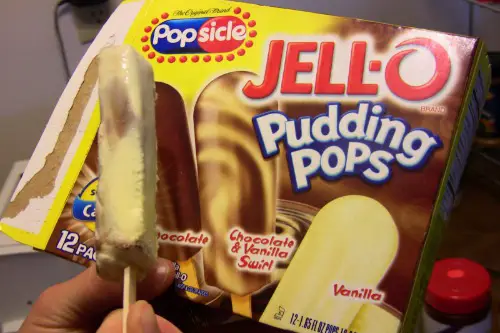
Jell-O Pudding Pops were a favorite frozen treat in the ’80s and ’90s, offering a cool, creamy option for anyone craving dessert. But as the years went on, they mysteriously disappeared from freezers, much to the dismay of fans. Despite a brief return in 2004, the pop’s popularity was never enough to sustain a permanent presence in stores. Their removal is often attributed to changing tastes and the growing demand for ice cream and other frozen treats, according to Tasting Table.
In the era of healthier eating trends and dairy-free options, traditional pudding pops are finding it harder to compete. The nostalgic factor remains strong, but it’s just not enough to keep the brand alive amidst the fierce competition in the frozen dessert market. Consumers now look for popsicles with fewer additives and better nutritional profiles. Jell-O Pudding Pops might never fully return, leaving us to reminisce about the past.
6. Olestra Chips
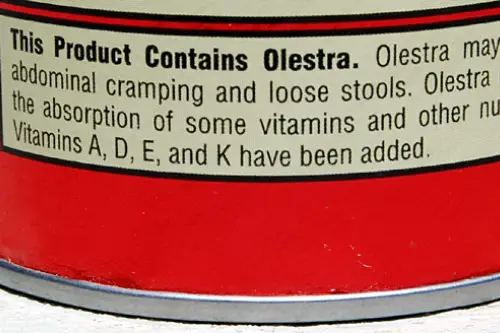
Olestra, a fat substitute that promised lower-calorie snacks, seemed like a game-changer for health-conscious snackers in the ’90s. It made its way into the market in products like Lay’s WOW! chips, marketed as a low-fat alternative. Unfortunately, the side effects of Olestra—such as digestive discomfort—quickly became a problem, leading to a decline in sales and consumer trust. As a result, Olestra-based snacks have mostly vanished from grocery store shelves, according to NBC News.
While Olestra’s intentions were good, it ended up getting a bad reputation among consumers who experienced those unpleasant side effects. In addition, the rise of more natural alternatives to fat substitutes, such as healthier oils and organic snacks, made Olestra seem outdated. People started opting for chips with fewer artificial ingredients and more natural fats. Today, Olestra’s legacy lives on in the form of a cautionary tale for food innovation.
7. Pop-Tarts Crunch
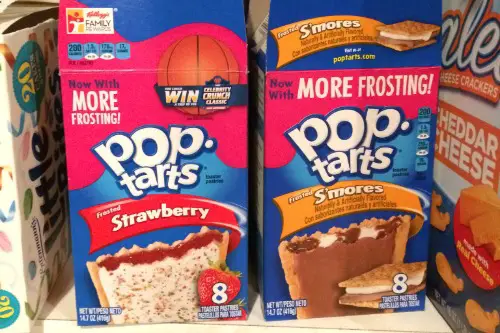
Pop-Tarts are a household name, but not all Pop-Tarts products have lasted. The Pop-Tarts Crunch, introduced in the early 2000s, was a twist on the classic toaster pastry, turning it into bite-sized cereal pieces. Unfortunately, this variation didn’t catch on as well as the original, disappearing after only a few years. The tiny pieces didn’t pack the same nostalgia punch that the full Pop-Tart did, and it struggled to compete with other cereals on the market.
Consumer trends were also shifting away from sugary, processed cereals and snacks. Kids were no longer as interested in the concept of a “Pop-Tart cereal” when they could choose other, more popular breakfast options. The bite-sized crunch was, ultimately, too niche to sustain long-term sales. As Pop-Tarts continue to evolve, this particular variation has been left behind in favor of more traditional options.
8. Hostess Fruit Pies
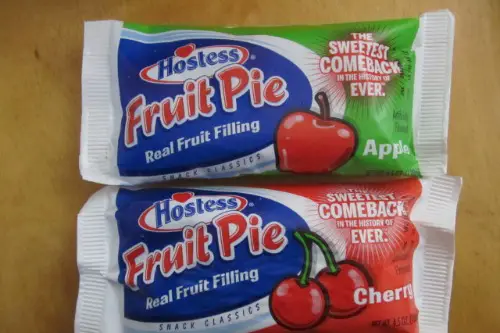
Hostess Fruit Pies are one of those nostalgic treats many people remember grabbing from vending machines or convenience stores. But over the years, these sweet, gooey pies have started disappearing from store shelves in favor of newer, “healthier” snack options. With the rise of artisanal bakeries and fresh, natural fruit-filled snacks, the appeal of pre-packaged fruit pies diminished. Consumers also became more concerned with preservatives and artificial ingredients in these classic snacks.
As demand for more health-conscious choices grew, Hostess shifted their focus to other products. Even though the pies have been around since the ’60s, their decline reflects a broader trend of pre-packaged sweets being replaced by fresh alternatives. These beloved pies have lost ground to fruit bars and other minimally processed options that align better with today’s consumer values. So, if you’re craving one, you might want to act fast.
9. Del Monte Canned Fruit Cocktail
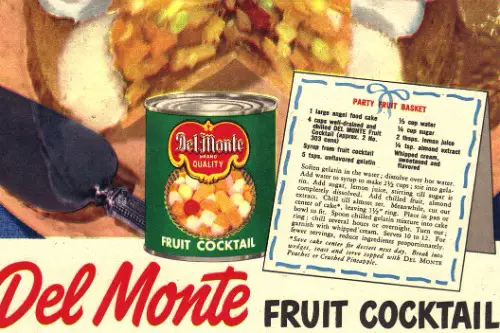
Del Monte’s canned fruit cocktail was once a staple of American households, often found in lunchboxes or served as a side dish. However, sales have taken a hit in recent years as consumers have shifted towards fresh and organic produce. The demand for canned fruit, once so popular, has dropped significantly due to concerns over added sugars and the preference for healthier, less processed foods. Even the long-standing reliability of Del Monte can’t overcome these changing trends.
With a greater emphasis on eating fresh and organic, people are more likely to reach for a ripe piece of fruit instead of something from a can. Health-conscious shoppers are also avoiding foods with preservatives, which has led to the decline of canned fruit products across the board. Plus, modern diets are shifting towards whole, unprocessed foods, leaving canned fruits behind. These once-ubiquitous snacks are becoming rarer in today’s grocery aisles.
10. McDonald’s Supersize Menu
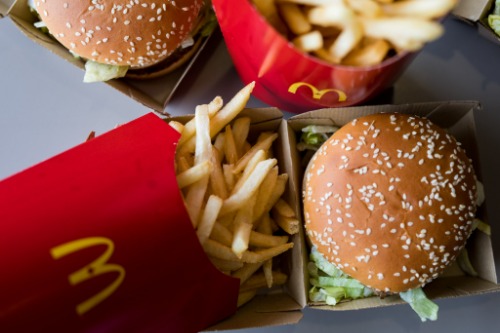
The Supersize option at McDonald’s was synonymous with big portions and even bigger appetites. Introduced in the ’90s, it allowed customers to upgrade their fries and drink to an almost absurd size. While it was a symbol of excess, the Supersize menu became a target for criticism in the early 2000s due to growing concerns over obesity and health. In 2004, McDonald’s officially retired the Supersize option, and it hasn’t returned to menus since.
The decision to eliminate Supersize was heavily influenced by the changing conversation around food and health. With the rise of the “slow food” movement and increased awareness of portion control, McDonald’s sought to reposition itself as more health-conscious. The Supersize menu was a relic of a time when supersized portions were the norm, but it couldn’t survive in an era focused on moderation. Today, McDonald’s focuses on more balanced meal options rather than massive portions.
11. Betty Crocker Snack Bars

Betty Crocker’s Snack Bars were once a go-to for an easy, quick snack in the 1990s. These bars came in various flavors and were marketed as a convenient treat for busy people. Unfortunately, the combination of sugary ingredients and a lack of differentiation from other snack bars on the market led to a decline in their popularity. Consumers quickly turned to new and improved alternatives with more natural ingredients and better taste profiles.
Snack bars now come in many variations, with a heavier focus on protein, low sugar, or gluten-free options. Betty Crocker’s snack bars couldn’t keep up with the evolving trends that demanded healthier or more innovative snacks. The brand did try to keep pace with the market, but it wasn’t enough to capture the same attention they once did. They became overshadowed by brands that were better suited to modern tastes.
12. Coca-Cola C2
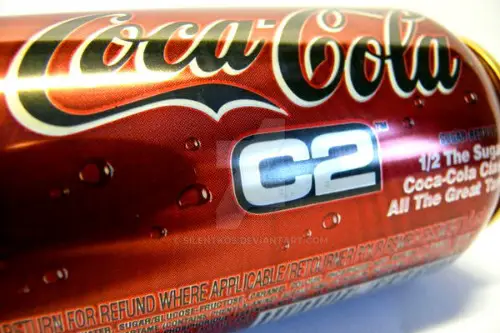
Coca-Cola C2 was introduced in the early 2000s as a “half-calorie” version of regular Coke, targeting those who wanted to cut down on sugar but still enjoy a full-flavored soda. While it generated interest initially, the product never gained long-term popularity. It was seen as an awkward middle ground between regular Coke and Diet Coke, failing to carve out a distinct place in the market. After a few years, Coca-Cola discontinued C2, leaving it a short-lived experiment.
Many consumers were not interested in a product that was halfway between regular and diet soda. C2’s low-calorie formula didn’t appeal to the health-conscious crowd, who preferred zero-calorie options like Diet Coke or Coke Zero. As tastes changed and sugar alternatives improved, Coca-Cola C2 couldn’t compete with other beverages. The “half-calorie” promise was just a step too far to make an impact in an increasingly health-focused market.


